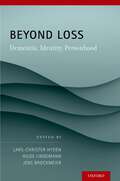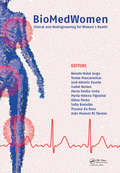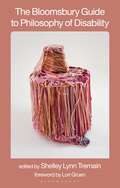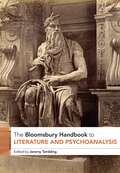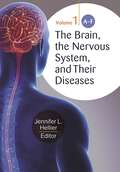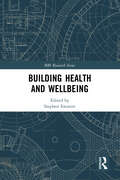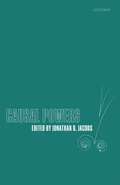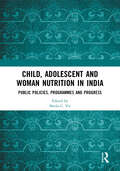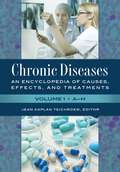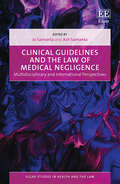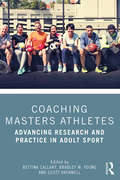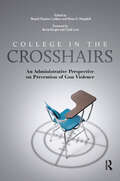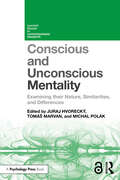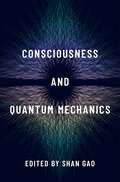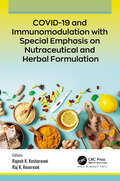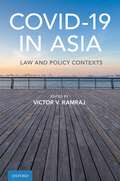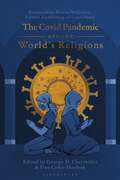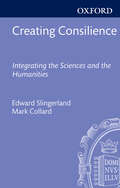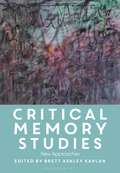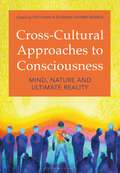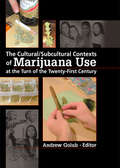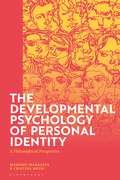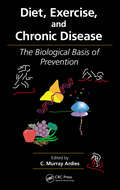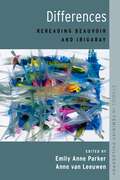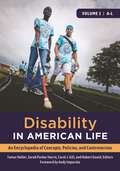- Table View
- List View
Beyond Loss: Dementia, Identity, Personhood
Coming to terms with dementia is one of the great challenges of our time. This volume of new interdisciplinary essays by internationally established scholars offers new ways of understanding and dealing with it. It explores views of dementia that go beyond the idea of loss, and rather envisions it as multilayered transformation and change of personhood and identity, and as development that mostly is socially shared with others. The studies collected here identify new empirical, theoretical, and methodological areas that will be crucial to future research and clinical practice concerned with age-related dementia. Three general themes are singled out as of particular importance and interest: persons and personhood, identity and agency, and the social and the communal.
BioMedWomen: Proceedings of the International Conference on Clinical and BioEngineering for Women's Health (Porto, Portugal, 20-23 June, 2015)
BioMedWomen 2015 - Clinical and BioEngineering for Women´s Health contains all author contributions presented at BioMedWomen 2015 (Porto, Portugal, 20–23 June 2015). International contributions from countries worldwide provided comprehensive coverage of the current state-of-the-art on different topics: • Aging • Physical Activity and Sports • Physiotherapy • Aesthetic and Reconstructive Surgery • Urogynecology • Imaging • Biomechanics • Nutrition • Health Psychology • Assisted diagnosis and Treatment • Tissue Engineering • Medical Devices • Prosthesis • Dental care and Orthodontics BioMedWomen 2015 - Clinical and BioEngineering for Women´s Health will be of interest to academics and to others interested and involved in clinical and engineering subjects related to women´s health.
The Bloomsbury Guide to Philosophy of Disability
The Bloomsbury Guide to Philosophy of Disability is a revolutionary collection encompassing the most innovative and insurgent work in philosophy of disability. Edited and anthologized by disabled philosopher Shelley Lynn Tremain, this book challenges how disability has historically been represented and understood in philosophy: it critically undermines the detrimental assumptions that various subfields of philosophy produce; resists the institutionalized ableism of academia to which these assumptions contribute; and boldly articulates new anti-ableist, anti-sexist, anti-racist, queer, anti-capitalist, anti-carceral, and decolonial insights and perspectives that counter these assumptions. This rebellious and groundbreaking book's chapters–most of which have been written by disabled philosophers–are wide-ranging in scope and invite a broad readership. The chapters underscore the eugenic impetus at the heart of bioethics; talk back to the whiteness of work on philosophy and disability with which philosophy of disability is often conflated; and elaborate phenomenological, poststructuralist, and materialist approaches to a variety of phenomena. Topics addressed in the book include: ableism and speciesism; disability, race, and algorithms; race, disability, and reproductive technologies; disability and music; disabled and trans identities and emotions; the apparatus of addiction; and disability, race, and risk. With cutting-edge analyses and engaging prose, the authors of this guide contest the assumptions of Western disability studies through the lens of African philosophy of disability and the developing framework of crip Filipino philosophy; articulate the political and conceptual limits of common constructions of inclusion and accessibility; and foreground the practices of epistemic injustice that neurominoritized people routinely confront in philosophy and society more broadly.A crucial guide to oppositional thinking from an international, intersectional, and inclusive collection of philosophers, this book will advance the emerging field of philosophy of disability and serve as an antidote to the historical exclusion of disabled philosophers from the discipline and profession of philosophy.The Bloomsbury Guide to Philosophy of Disability is essential reading for faculty and students in philosophy, disability studies, political theory, Africana studies, Latinx studies, women's and gender studies, LGBTQ studies, and cultural studies, as well as activists, cultural workers, policymakers, and everyone else concerned with matters of social justice.Description of the book's cover: The book's title appears on two lines across the top of the cover which is a salmon tone. The names of the editor and the author of the foreword appear in white letters at the bottom of the book. The publisher's name is printed along the right side in white letters. At the centre, a vertical white rectangle is the background for a sculpture by fibre artist Judith Scott. The sculpture combines layers of shiny yarn in various colours including orange, pink, brown, and rust woven vertically on a large cylinder and horizontally around a smaller cylinder, as well as blue yarn woven around a protruding piece at the bottom of the sculpture. The sculpture seems to represent a body and head of a being sitting down, a being with one appendage, a fat person, or a little person.
The Bloomsbury Handbook to Literature and Psychoanalysis (Bloomsbury Handbooks)
Providing the most comprehensive examination of the two-way traffic between literature and psychoanalysis to date, this handbook looks at how each defines the other as well as addressing the key thinkers in psychoanalytic theory (Freud, Klein, Lacan, and the schools of thought each of these has generated). It examines the debts that these psychoanalytic traditions have to literature, and offers plentiful case-studies of literature's influence from psychoanalysis. Engaging with critical issues such as madness, memory, and colonialism, with reference to texts from authors as diverse as Shakespeare, Goethe, and Virginia Woolf, this collection is admirably broad in its scope and wide-ranging in its geographical coverage. It thinks about the impact of psychoanalysis in a wide variety of literatures as well as in film, and critical and cultural theory.
The Brain, the Nervous System, and Their Diseases [3 volumes]: [3 volumes]
This comprehensive encyclopedia provides a thorough overview of the human brain and nervous system—the body's "CPU and data network." It covers basic anatomy and function, diseases and disorders, treatment options, wellness concepts, and key individuals in the fields of neurology and neuroscience.Written to be accessible to high school and college students and general readers, this three-volume encyclopedia provides a sweeping overview of the brain, nervous system, and their diseases. Bringing together contributions from leading neuroscientists, neurologists, family physicians, psychologists, and public health professionals, the work covers both brain anatomy and function and neurological disorders, addressing how underlying processes—whether biological, developmental, environmental, or neurodegenerative—manifest themselves.Roughly a third of the entries are about neuroscience and how neurons "talk" to each other in brain circuits to provide normal function. Another group of entries discusses abnormalities or dysfunctions of the brain that develop into disorders or diseases, while a third group focuses on research and experimental procedures commonly used to study the nervous system. The encyclopedia also explores its subject from a wellness perspective, explaining actions that can prevent neurological disorders and injuries and promote general nervous system health. By addressing both ends of the spectrum, the work presents a holistic perspective that will appeal to a broad range of readers.
Building Health and Wellbeing (BRI Research Series)
This book focuses on the relationship between buildings and our health and wellbeing, and by extension our quality of life. Expanding on the 50th anniversary special issue of Building Research & Information (BRI), which was dedicated to health and wellbeing, articles have been extended and updated to complement contributions from new authors. Building Health and Wellbeing covers design for aging, energy poverty and health, productivity and thermal comfort in offices, housing space and occupancy standards and much more. The aim is to explore the inter-relationship between people and our buildings. Chapters are supported with new case studies to illustrate global approaches to a common challenge, while demonstrating local strategies to suit different climates. The content covers housing, offices, and healthcare facilities and the unique aspect of the book is the people perspective, providing outlooks from different age groups and users of buildings. It will act as an important reference for academics in the built environment and healthcare sectors.
Causal Powers
Causal powers are ubiquitous. Electrons are negatively charged; they have the power to repel other electrons. Water is a solvent; it has the power to dissolve salt. We use concepts of causal powers and their relatives-dispositions, capacities, abilities, and so on-to describe the world around us, both in everyday life and in scientific practice. But what is it about the world that makes such descriptions apt? On one view, the neo-Humean view, there is nothing intrinsic about, say, negative charge, that makes its bearers have the power to repel other negatively charged particles. Rather, matters extrinsic to negative charge, the patterns and regularities in which negatively charged particles are embedded, fix the powers its bearers have. But on a different view, the anti-Humean view, causal powers are intrinsically powerful, bringing with them their own causal, nomic, and modal nature independent of extrinsic patterns and regularities-even fixing those patterns and regularities. This collection brings together new and important work by both emerging scholars and those who helped shape the field on the nature of causal powers, and the connections between causal powers and other phenomena within metaphysics, philosophy of science, and philosophy of mind. Contributors discuss how one who takes causal powers to be in some sense irreducible should think about laws of nature, scientific practice, causation, modality, space and time, persistence, and the metaphysics of mind.
Child, Adolescent and Woman Nutrition in India: Public Policies, Programmes and Progress
In the last decade, addressing the persistent problem of maternal, infant, young child and adolescent malnutrition in India has gained significant attention. With the well-established serious implications of malnutrition on mortality and morbidity; mental health and cognitive development; activity and productivity and overall economic development, today there is an unprecedented political commitment to improving the grave woman and child nutrition scenario in the country. POSHAN ABHIYAAN (Nutrition Mission) was launched in a Mission mode by the Honourable Prime Minister of India on March 8, 2018, followed by measures for an effective implementation of an integrated nutrition strategy through POSHAN 2.0 in 2022. The book with 15 chapters tracks the history of evolvement of public nutrition policies and strategies, presents an update on the nutrition scenario, analyses the experiences and synthesises emerging lessons in the prevention and control of malnutrition. Additionally, the book includes chapters with details of each of the various government systems such as Health, ICDS, NRLM, PDS, Education/MDM, Water-Sanitation that provide lead in mainstreaming nutrition actions that directly or indirectly impact on accelerating the improvement of the nutrition situation of women, adolescents and children. The book is intended to be an indispensable reference for teachers and students of nutrition, community medicine, public health and development as well as professionals involved in the formulation and implementation of the nutrition policies and programmes. Print edition not for sale in South Asia (India, Sri Lanka, Nepal, Bangladesh, Pakistan and Bhutan)
Chronic Diseases [2 volumes]: An Encyclopedia of Causes, Effects, and Treatments [2 volumes]
This comprehensive two-volume work provides an overview of an area of growing concern, offering readers a one-stop resource for researching the chronic conditions that increasingly plague our society.Chronic diseases and their consequences are among the foremost problems faced by the U.S. health care system, accounting for untold distress and mounting personal and societal costs. Bringing together an unprecedented array of detailed data and facts, this unique two-volume encyclopedia provides information that will help readers understand what they can do to avoid these diseases, as well as how to best manage chronic conditions that may affect them or their families.Designed for high school, public, and university libraries, this three-volume set covers an extensive range of disorders, including diabetes, cancer, high blood pressure, asthma, heart disease, arthritis, osteoporosis, kidney disease, Alzheimer's disease, HIV/AIDS, and hepatitis. Depression and anxiety are covered, as are violence and injury, drug use and abuse, and tobacco as a health hazard. Much more than just a list of diseases, this encyclopedia enables readers to easily research terminology, symptoms, methods of diagnosis, medical treatments and alternative medicine, risk factors, associated conditions, and preventive approaches. The work is consistent with Healthy People 2010 national goals and objectives and with National Health Education Standards.
Clinical Guidelines and the Law of Medical Negligence: Multidisciplinary and International Perspectives (Elgar Studies in Health and the Law)
This book critically considers the dynamic relationship between clinical guidelines and medical negligence litigation, arguing that a balance must be struck between blinkered reliance on guidelines and casual disregard. It explores connections between academic law and professional practice, bringing together an array of perspectives which reveal that although guidelines may not be dispositive, they nonetheless play an important role in medical negligence law.The chapters provide compelling insights from academics, lawyers, barristers, doctors and healthcare professionals into the use of guidelines in determining the legal standard for breach of duty, thereby contributing to a holistic understanding of guideline usage in this area of law. Sociological considerations along with empirical findings are used to underpin these concepts. While focusing on the UK, contributors draw upon international law including that from the United States, South Africa, the Netherlands and other countries. Based on this analysis the conclusion offers a theoretical framework for practical application illustrated by a case-based discourse.This book makes a significant contribution to the knowledge base in the subject area. It is an essential read for legal academics and lawyers working in medical and health law, as well as for doctors and other healthcare professionals. It will be a key reference point for medical regulators, health organisation policymakers and clinical governance teams.
Coaching Masters Athletes: Advancing Research and Practice in Adult Sport
This book is a foundational resource for all coaches and student coaches who are, or who plan to be, working with Masters athletes. This athletic cohort typically includes adults over the age of 35 years who are registered for sport programs/events, and who invest in training to improve themselves for competitions that range from recreational to championship caliber. As the boom in Masters sport continues worldwide, coaches are increasingly tasked with the development and support of adults’ quality sport experiences, and the implementation of strategies to foster skill acquisition and to facilitate their pursuit of competitive goals. This book presents what is different about coaching Masters athletes and prompts coaches to expand their scope of practice beyond traditional knowledge associated with youth or younger adult cohorts. It is essential for coaches to understand the psychological and social considerations that are unique to coaching adult sports-persons and Masters athletes, and that can be adapted to adults whose training and preparation for competition is quite varied. Coaching Masters Athletes: Advancing Research and Practice in Adult Sport explores the research and practice specific to planning to coach Masters athletes and divulges what is known about distinctive considerations for delivering coaching interventions to this cohort, expanding on coaches’ abilities to influence adults’ personal development, as well as their own coach education through Masters Sport. Readers and students of Coaching, Physical Activity, Health Psychology, Sport Leadership and Exercises Science will gain valuable applied perspectives grounded in best practice research on how to coach one of the fastest-growing sporting cohorts, to promote quality adult sport, and to keep adult sports-persons engaged and active as they age.
College in the Crosshairs: An Administrative Perspective on Prevention of Gun Violence
Gun violence – whether rampage shootings, homicides or suicides – is a potential reality all campuses have to face. This book provides leaders in higher education – and particularly those in student affairs – with data about past incidents, an analysis of trends, and background on the national debate about gun policies and how they impact colleges, state by state. It importantly raises issues about student psychological development, mental health, and the prevalence of alcohol and substance abuse on campus, to better inform discussion about allowing guns on campus and concealed carry. It concludes by sharing strategies for averting gun-related tragedies, and offering models for responding when they occur, based on lessons learned and best practices. The book addresses concealed carry legislation and its impact on campus policies by state, examining the concerns of administrators as they discharge their duty of care to students and comply with legal and regulatory frameworks. Asking “Are our students developmentally ready to make a morally sophisticated, life-changing decision to use firearms in response to a real or perceived threat?”, it offers important perspectives and scientific data, so far absent from the debate, to shape the ongoing conversation with lawmakers and the public about what it takes to keep college communities safe.In addressing risk and prevention, contributors cover the relationship between violence and mental health, and the need to establish comprehensive strategic plans and a preventative framework that promotes help-seeking for those in need before they reach the point of crisis, as well as a campus-wide risk assessment team, stressing the importance of cultivating a community-wide approach to campus safety by empowering members to report suspicious behavior. They also offer guidance on improving effective behavior intervention and case management processes.The book concludes by outlining best practices, and providing guidance on developing an emergency plan, practicing and testing systems, and creating a robust communications strategy. Individual chapters focus on how small colleges with limited resources can develop effective plans into by partnering with local agencies; as well as on the steps that community colleges – who generally lack resident advisors and residential staff, and whose students are far more dispersed – can take to diminish risk and respond promptly and professionally to a crisis.This is an essential guide for all higher education leaders concerned about preventing violence on our campuses, and a call to action.
Conscious and Unconscious Mentality: Examining their Nature, Similarities, and Differences (Current Issues in Consciousness Research)
In this collection of essays, experts in the field of consciousness research shed light on the intricate relationship between conscious and unconscious states of mind. Advancing the debate on consciousness research, this book puts centre stage the topic of commonalities and differences between conscious and unconscious contents of the mind. The collection of cutting-edge chapters offers a breadth of research perspectives, with some arguing that unconscious states have been unjustly overlooked and deserve recognition for their richness and wide scope. Others contend that significant differences between conscious and unconscious states persist, highlighting the importance of their distinct characteristics. Explorations into the nature of the transition from unconscious to conscious mind further complicate the picture, with some authors questioning whether a sharp divide between unconscious and conscious states truly exists. Delving into ontological, epistemological, and methodological issues, this thought-provoking text challenges established paradigms and paves the way for a reimagining of consciousness research. It does so in an understandable and accessible way, making this a perfect companion for both experts and students of philosophy, psychology, and related fields. Chapters 2, 4, 9, 10, 14 and 16 of this book are freely available as downloadable Open Access PDFs at http://www.taylorfrancis.com under a Creative Commons Attribution-Non Commercial-No Derivatives (CC-BY-NC-ND) 4.0 license.
Consciousness and Quantum Mechanics (Philosophy of Mind)
Consciousness and quantum mechanics are two great mysteries of our time--and recently scholars have postulated a deeper connection between them. Exploring this possible connection can be fruitful: an analysis of the conscious mind and psychophysical connection can be indispensable in understanding quantum mechanics and solving the notorious measurement problem, and there is also likely some kind of intimate connection between quantum mechanics--the most fundamental theory of the physical world--and our efforts to explain, naturalistically, the phenomenon of consciousness. The seventeen newly written chapters in this volume are divided into three sections: Consciousness and the Wave Function Collapse, Consciousness in Quantum Theories, and Quantum Approaches to Consciousness. This is the first volume to provide a comprehensive review and thorough analysis of intriguing conjectures about the connection between consciousness and quantum mechanics. Written by leading experts in physics, philosophy, and cognitive science, Consciousness and Quantum Mechanics will be of value to students and researchers working on the foundations of quantum mechanics and the philosophy of mind.
COVID-19 and Immunomodulation with Special Emphasis on Nutraceutical and Herbal Formulation
The unique volume, COVID-19 and Immunomodulation with Special Emphasis on Nutraceutical and Herbal Formulation, covers recent advances in the management, prevention, and application of nutraceuticals and herbs in preventing and treating COVID-19. It demonstrates the beneficial immunomodulatory properties of nutraceuticals, spices, polyphenols, customary (traditional) medications, natural products, ayurveda, antioxidants, trace elements, vitamins, vaccines, etc., for COVID-19. Key features: Evaluates the benefits of herbal immunomodulators for safety and having fewer (if any) side effects, as opposed to conventional/artificial drugs Considers the role of ayurvedic medicines in the control and prevention of COVID-19 viruses Summarizes the most current discoveries and key factors of SARS-CoV-2 genetics, pathophysiology, and the host immune response Looks at the efficacy of vaccines against COVID-19 infection and the vaccines currently available Explains the pharmacological results alongside precise immunomodulator agents, like immunostimulators and immunosuppressants Looks at the containment and prevention strategies for COVID-19 infection and offers strategies for the future The information provided here details how the use of selected nutraceuticals and herbals can be helpful, similarly to pharmacological remedies, in stopping some COVID-19-associated complications in infected patients. It will be a valuable resource for researchers in pharmaceutical science, medicine, COVID and related diseases, and others.
Covid-19 in Asia: Law and Policy Contexts
This is a book for an extraordinary time, about a pandemic for which there is no modern precedent. It is an edited collection of original essays on Asia's legal and policy responses to the Covid-19 pandemic, which, in a matter of months, swept around the globe, infecting millions. It transformed daily life in almost every corner of the planet: lockdowns of cities and entire countries, physical distancing and quarantines, travel restrictions and border controls, movement-tracking technology, mandatory closures of all but essential services, economic devastation and mass unemployment, and government assistance programs on record-breaking scales. Yet a pandemic on this scale, under contemporary conditions of globalization, has left governments and their advisors scrambling to improvise solutions, often themselves unprecedented in modern times, such as the initial lockdown of Wuhan. This collection of essays analyzes law and policy responses across Asia, identifying cross-cutting themes and challenges. It taps the collective knowledge of an interdisciplinary team of sixty-one researchers both in the service of policy development, and with the goal of establishing a scholarly baseline for research after the storm has passed. The collection begins with an epidemiological overview and survey of the law and policy themes. The jurisdiction-specific case studies and cross-cutting thematic essays cover five topics: first wave containment measures; emergency powers; technology, science, and expertise; politics, religion, and governance; and economy, climate, and sustainability. Chapter 20: Cambodia: Public Health, Economic, and Political Dimensions by Ratana Ly, Vandanet Hing, & Kimsan Soy is available for free.
The Covid Pandemic and the World’s Religions: Challenges and Responses
Believers from a variety of faith communities were asked to assess how the Covid pandemic has affected their faith. The anthology collects their responses to key questions, such as: · How does your faith explain why such events occur? · How has it affected your religious practices? · What changes has it necessitated? · What differences might we expect once the pandemic is over? · What have we learned from it? Two exponents of each major religion and a number of minority faiths comment on these issues, combined with a concluding essay by the editors assessing the overall impact of the pandemic on religion worldwide. Faiths explored include Jewish, Christian, Islamic, Hindu, Buddhist, Shinto, Sikh Baha'i, Jain, African Traditional Religion, Zoroastrian, Unitarian, Jehovah's Witnesses and Christian Science.
Creating Consilience: Integrating the Sciences and the Humanities (New Directions in Cognitive Science)
Calls for a "consilient" or "vertically integrated" approach to the study of human mind and culture have, for the most part, been received by scholars in the humanities with either indifference or hostility. One reason for this is that consilience has often been framed as bringing the study of humanistic issues into line with the study of non-human phenomena, rather than as something to which humanists and scientists contribute equally. The other major reason that consilience has yet to catch on in the humanities is a dearth of compelling examples of the benefits of adopting a consilient approach. Creating Consilience is the product of a workshop that brought together internationally-renowned scholars from a variety of fields to address both of these issues. It includes representative pieces from workshop speakers and participants that examine how adopting such a consilient stance -- informed by cognitive science and grounded in evolutionary theory -- would concretely impact specific topics in the humanities, examining each topic in a manner that not only cuts across the humanities-natural science divide, but also across individual humanistic disciplines. By taking seriously the fact that science-humanities integration is a two-way exchange, this volume takes a new approach to bridging the cultures of science and the humanities. The editors and contributors formulate how to develop a new shared framework of consilience beyond mere interdisciplinarity, in a way that both sides can accept.
Critical Memory Studies: New Approaches
Bringing together a diverse array of new and established scholars and creative writers in the rapidly expanding field of memory studies, this collection creatively delves into the multiple aspects of this wide-ranging field. Contributors explore race-ing memory; environmental studies and memory; digital memory; monuments, memorials, and museums; and memory and trauma. Organised around 7 sections, this book examines memory in a global context, from Kashmir and Chile to the US and UK. Featuring contributions on topics such as the Black Lives Matter movement; the AIDS crisis; and memory and the anthropocene, this book traces and consolidates the field while analysing and charting some of the most current and cutting-edge work, as well as new directions that could be taken.
Cross-Cultural Approaches to Consciousness: Mind, Nature, and Ultimate Reality
Uniting analytic philosophy with Buddhist, Indian, and Chinese traditions, this collection marks the first systematic cross-cultural examination of one of philosophy of mind's most fascinating questions: can consciousness be conceived as metaphysically fundamental? Engaging in debates concerning consciousness and ultimate reality, emergence and mental causation, realism, idealism, panpsychism, and illusionism, it understands problems through the philosophies of East and South-East Asia, in particular Buddhism and Vedanta. Each section focuses on a specific aspect or theory of consciousness, and examines a particular subject from different disciplinary perspectives including philosophy, psychology, and cognitive science. These different angles allows readers to gain insight into the intellectual challenges and problems of the study of consciousness and its place in the thought traditions of both Eastern and Western philosophy. Raising new questions, it provides a more global and holistic understanding of consciousness, presenting a stimulating and original contribution to contemporary consciousness studies and the metaphysics of mind.
The Cultural/Subcultural Contexts of Marijuana Use at the Turn of the Twenty-First Century
Learn why marijuana use has increased in the new millenniumAccording to the Substance Abuse and Mental Health Services Administration, marijuana is the most commonly used illicit drug. The Cultural/Subcultural Contexts of Marijuana Use at the Turn of the Twenty-First Century takes a close look at present cannabis use trends in the new millennium by providing the latest research findings and most current case studies. Age and ethnographic data are presented in detail always with a constant focus on the unique subcultural contexts in today&’s society. This examination explores the most pressing issues in marijuana use, including the increased popularity of blunt smoking, the social ramifications of marijuana use in gangs and Southeast Asian youth, and alternative delivery systems for medical marijuana.The Cultural/Subcultural Contexts of Marijuana Use at the Turn of the Twenty-First Century discusses various aspects of marijuana being the drug of choice in today&’s culture, including the different subgroups of age, economic status, and ethnic background. The book provides a comprehensive view of the people, reasons for use, varied ways of ingesting the drug, and marijuana use "rituals." Extensive references, charts, tables, and figures are included to enhance clarification of research findings.The Cultural/Subcultural Contexts of Marijuana Use at the Turn of the Twenty-First Century discusses the latest research findings on: the growth of marijuana use in different social groups during the 1990s medical marijuana blunt smoking and marijuana use rituals as settings for informal social controls marijuana use among minorities marijuana use in youths and young adults marijuana use among gang members adult use production, distribution, and administration of non-smokable marijuanaThe Cultural/Subcultural Contexts of Marijuana Use at the Turn of the Twenty-First Century is insightful, valuable, and is certain to become a reference source for researchers, educators, students, and policy advocates.
The Developmental Psychology of Personal Identity: A Philosophical Perspective
Massimo Marraffa and Cristina Meini re-connect the psychology of identity with its philosophical roots in this study. They trace the contemporary problem of the self to John Locke and William James' foundational theories on personal identity. By integrating the philosophy of identity with empirical and neuropsychological research, Marraffa and Meini provide an original synthesis of multidisciplinary conceptions of the self. The Developmental Psychology of Personal Identity builds on Chomsky-inspired developmental psychology, Jean Piaget's constructivism, Lev Vygotskij's sociocultural perspective on development and John Bowlby's attachment theory. In this theoretical framework, the book draws on the data of the psychological sciences to reconstruct the trajectory of the self as a 'Lockean person' (i.e., as morally responsible agent). The authors link the birth of self-consciousness through the body and emotions to the construction of a narrative self. Their combination of philosophy and cognitive sciences makes an important contribution to multiple disciplines concerned with personal identity. It provokes new routes to understanding identity and self, autobiographical memory, and personality.
Diet, Exercise, and Chronic Disease: The Biological Basis of Prevention
Exercise and diet are key factors in the etiology and prevention of chronic disease. While most books on chronic disease have a decided clinical approach, Diet, Exercise, and Chronic Disease: The Biological Basis of Prevention brings together the latest cellular- and molecular-based research on the etiology of chronic diseases and the impact of var
Differences: Rereading Beauvoir and Irigaray (Studies in Feminist Philosophy)
Simone de Beauvoir and Luce Irigaray famously insisted on their philosophical differences, and this mutual insistence has largely guided the reception of their thought. What does it mean to return to Simone de Beauvoir and Luce Irigaray in light of questions and problems of contemporary feminism, including intersectional and queer criticisms of their projects? How should we now take up, amplify, and surpass the horizons opened by their projects? Seeking answers to these questions, the essays in this volume return to Beauvoir and Irigaray to find what the two philosophers share. And as the authors make clear, the richness of Beauvoir and Irigaray's thought far exceeds the reductive parameters of the Eurocentric, bourgeois second-wave debates that have constrained interpretation of their work. The first section of this volume places Beauvoir and Irigaray in critical dialogue, exploring the place of the material and the corporeal in Beauvoir's thought and, in doing so, reading Beauvoir in a framework that goes beyond a theory of gender and the humanism of phenomenology. The essays in the second section of the volume take up the challenge of articulating points of dialogue between the two focal philosophers in logic, ethics, and politics. Combined, these essays resituate Beauvoir and Irigaray's work both historically and in light of contemporary demands, breaking new ground in feminist philosophy.
Disability in American Life [2 volumes]: An Encyclopedia of Concepts, Policies, and Controversies [2 volumes]
Disability—as with other marginalized topics in social policy—is at risk for exclusion from social debate. This multivolume reference work provides an overview of challenges and opportunities for people with disabilities and their families at all stages of life.Once primarily thought of as a medical issue, disability is now more widely recognized as a critical issue of identity, personhood, and social justice. By discussing challenges confronting people with disabilities and their families and by collecting numerous accounts of disability experiences, this volume firmly situates disability within broader social movements, policy, and areas of marginalization, providing a critical examination into the lived experiences of people with disabilities and how disability can affect identity.A foundational introduction to disability for a wide audience—from those intimately connected with a person with a disability to those interested in the science behind disability—this collection covers all aspects of disability critical to understanding disability in the United States. Topics covered include characteristics of disability; disability concepts, models, and theories; important historical developments and milestones for people with disabilities; prominent individuals, organizations, and agencies; notable policies and services; and intersections of disability policy with other policy.
